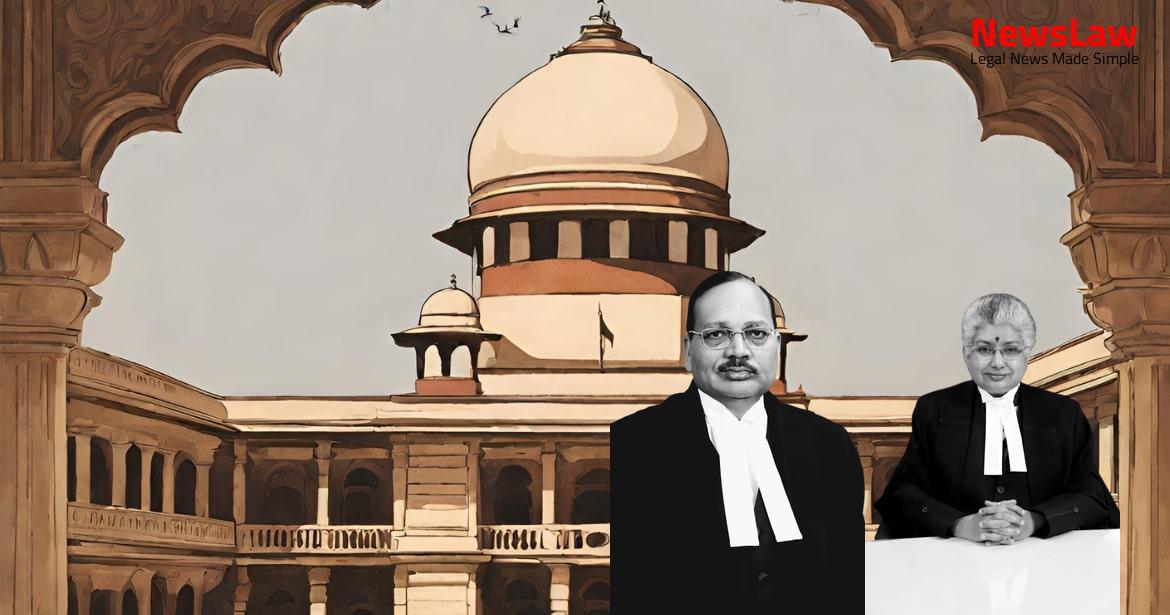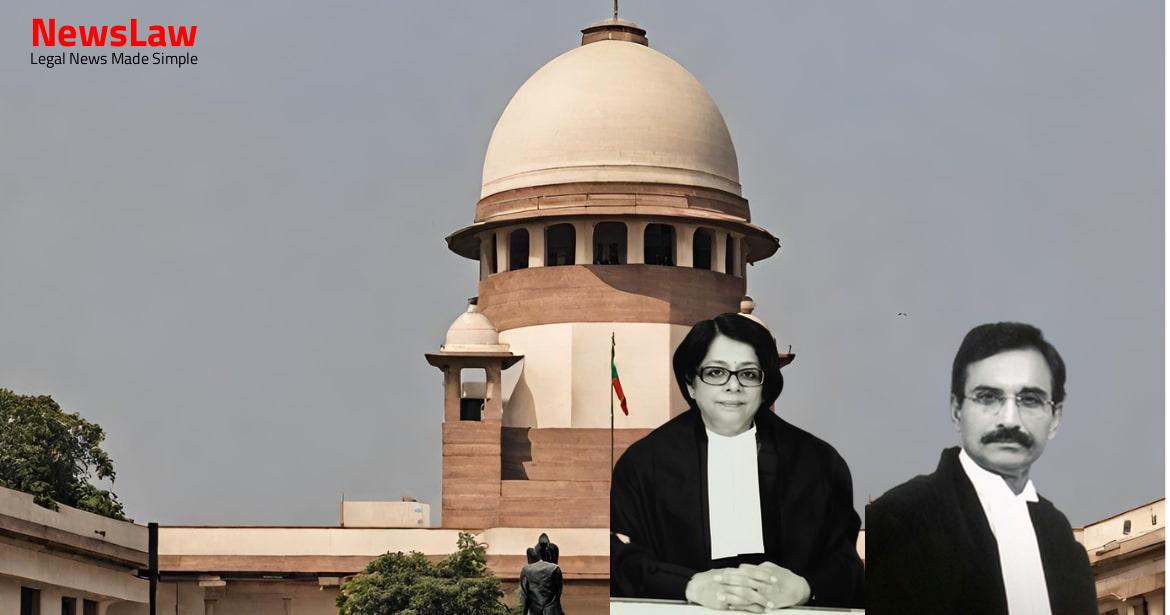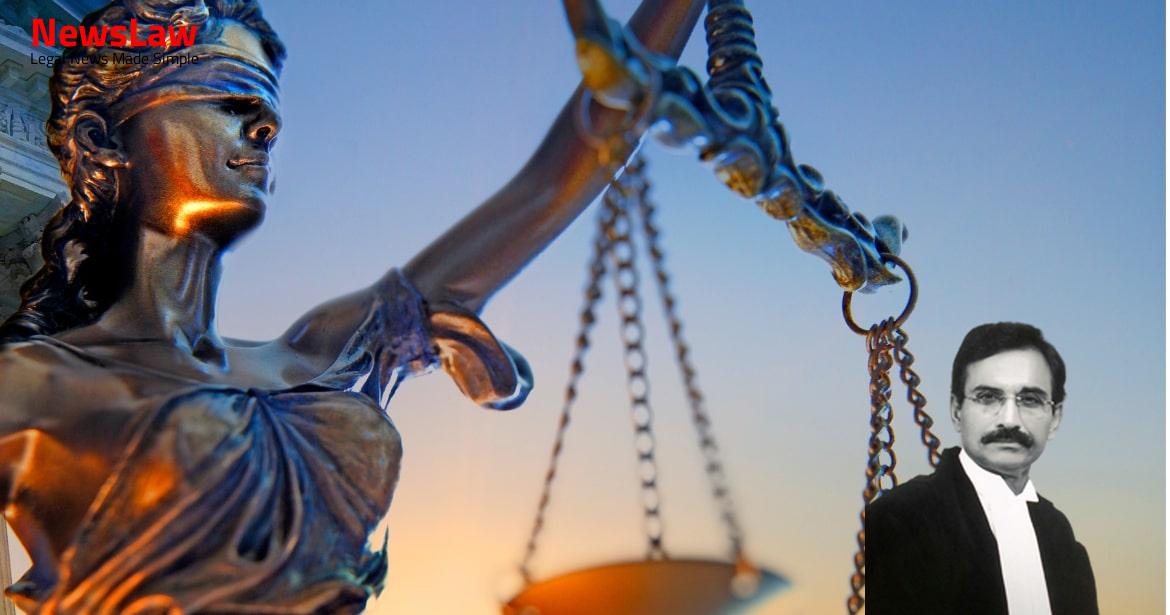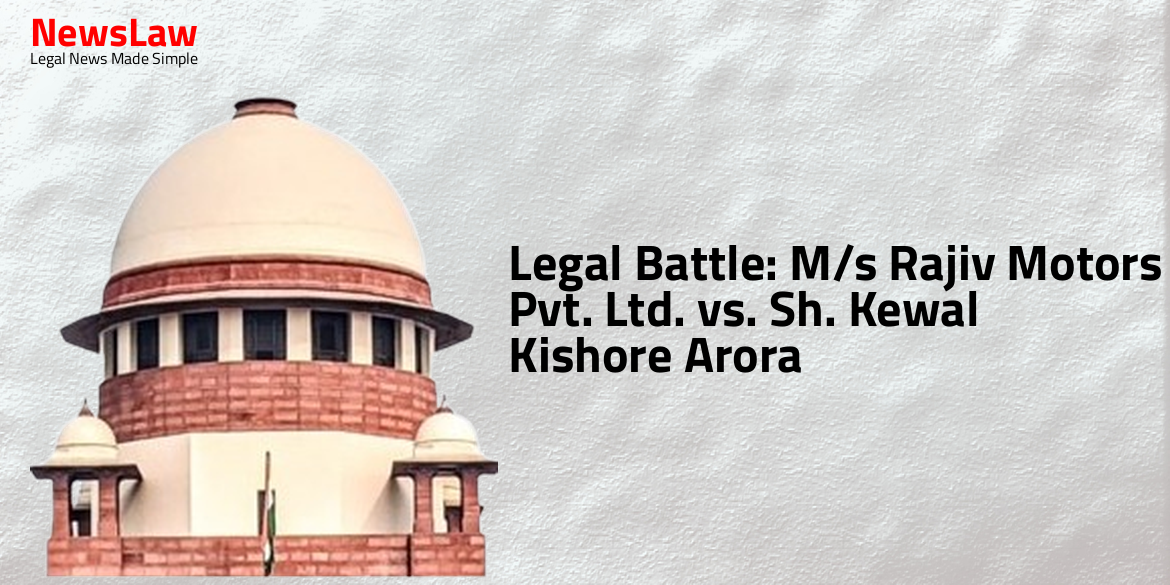No.7972 of 2016 (MV) was filed by the insured claimant, both being aggrieved by the judgment and award dated 16.09.2016 passed by the Ist Addl. Near the RTO Office, Chitradurga, on NH-4 flyover, the driver of the tanker lorry drove the same in a rash and negligent manner and with high speed and dashed into the hind portion of another lorry bearing No.KA-16-B-6247, as a result of which, appellant- claimant sustained comminuted fracture of bones tibia of both legs and other injuries on his body. It is contended by the appellant that as a result of the accident he became permanently disabled and due to fracture of tibia bones of both legs and other injuries, he is unable to discharge his duties as a cleaner in the tanker lorry and hence, he has suffered both financially and physically.
The High Court also noted that the award of compensation was on the higher side and hence, High Court reduced the compensation to Rs.7,37,604/- under the following heads: – Sl. Permanent disability (20% of Rs.9,000 x 12 x 17) 3,67,200/- 2.
The sum and substance of the contention of learned counsel for the appellant is that the assessment of permanent physical disability should be at 54% but the High Court had erroneously reduced it at 20% which was 34% less and therefore, these appeals have been preferred. Per contra, learned counsel for the respondent insurer – supported the judgment of the High Court and submitted that these appeals ought to be dismissed as being devoid of merit.
A person is not only to be compensated for the physical injury, but also for the loss which he suffered as a result of such injury. Kunhikuttan Nair [(1969) 3 SCC 64 : AIR 1970 SC 376], R.D.
The heads under which compensation is awarded in personal injury cases are the following: Pecuniary damages (Special damages) ( i ) Expenses relating to treatment, hospitalisation, medicines, transportation, nourishing food, and miscellaneous expenditure. It is only in serious cases of injury, where there is specific medical evidence corroborating the evidence of the claimant, that compensation will be granted under any of the heads ( ii )( b ), ( iii ), ( v ) and ( vi ) relating to loss of future earnings on account of permanent disability, future medical expenses, loss of amenities (and/or loss of prospects of marriage) and loss of expectation of life.
Permanent disability refers to the residuary incapacity or loss of use of some part of the body, found existing at the end of the period of treatment and recuperation, after achieving the maximum bodily improvement or recovery which is likely to remain for the remainder life of the injured. Partial permanent disability refers to a person’s inability to perform all the duties and bodily functions that he could perform before the accident, though he is able to perform some of them and is still able to engage in some gainful activity. When a disability certificate states that the injured has suffered permanent disability to an extent of 45% of the left lower limb, it is not the same as 45% permanent disability with reference to the whole body.
Some Tribunals wrongly assume that in all cases, a particular extent (percentage) of permanent disability would result in a corresponding loss of earning capacity, and consequently, if the evidence produced show 45% as the permanent disability, will hold that there is 45% loss of future earning capacity.
We may however note that in some cases on appreciation of evidence and assessment, the Tribunal may find that the percentage of loss of earning capacity as a result of the permanent disability is approximately the same as the percentage of permanent disability in which case, of course, the Tribunal will adopt the said percentage for determination of compensation.
[(2010) 10 SCC 254 : (2010) 3 SCC (Cri) 1258 : (2010) 10 Scale 298] and Yadava Kumar v. The Tribunal has to first ascertain what activities the claimant could carry on in spite of the permanent disability and what he could not do as a result of the permanent disability (this is also relevant for awarding compensation under the head of loss of amenities of life).
To put it differently, the percentage of loss of earning capacity is not the same as the percentage of permanent disability (except in a few cases, where the Tribunal on the basis of evidence, concludes that the percentage of loss of earning capacity is the same as the percentage of permanent disability).
As per PW-2 (the doctor who treated him), there was 54% disability despite the treatment given to the appellant herein. He also took treatment as an outpatient on 30.06.2015 and 30.12.2015. Future medical expenses 50,000/- ___________
Total Rs.11,67,405/-
Case Title: T.J. PARAMESHWARAPPA @ PARAMESHWARAPPA @ J.T. PARAMESHWARAPPA @ TALALKENA GOWDRA PARAMESHWARAPPA Vs. THE BRANCH MANAGER NEW INDIA ASSURANCE CO. LTD. (2022 INSC 1218)
Case Number: C.A. No.-008598-008599 / 2022



